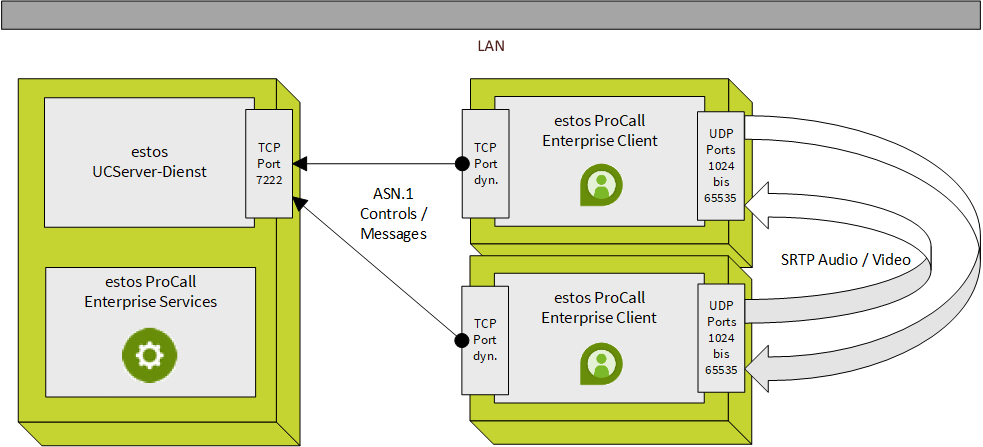| Update status | November 2025 |
|---|
| Product relevance | ProCall 8 Enterprise ProCall 7 Enterprise (End-of-Life)
|
|---|
In terms of media streams, SIP softphone calls differ significantly from audio and video chats between ProCall Desktop for Windows.
In an audio/video chat, the exchange of SRTP packets takes place directly between the clients.
The media streams are not routed via the estos UC media server as with a SIP softphone call.
Diagram/Topology: UCServer service – ProCall Enterprise clients – SRTP audio/video

The estos UC media server does not perform relay or transcoding tasks for audio and video chats. Similarly, the PBX on the estos ProCall Enterprise server is not involved in such scenarios and thus has no information about active chats. The UCServer SIP Gateway is not active during signalling via SIP and negotiations regarding media streams. This lack of communication with the telephone system can be relevant for controlling Do Not Disturb or Busy on Busy status.
The topology diagram shows a typical ProCall Enterprise installation in the local network, assuming unrestricted communication between all clients and the ProCall Enterprise server.
The ProCall Desktops for Windows establish a connection to ProCall Enterprise server port 7222 (in the installation standard) via a dynamically assigned TCP port. The clients use this connection to exchange requests and events with the server.
For the exchange of RTP media packets during an audio or video chat, the clients negotiate a direct connection via UDP using ICE Handshake (WebRTC standard). Ports from the range 1024 to 65535 are used (all ports except well-known ports).
If necessary, clients also take available STUN and TURN servers into account when optimising the media path.
Screen sharing between two estos ProCall Desktops for Windows is – to put it simply – a special form of video chat, so the communication relationships shown here also apply to this functionality.